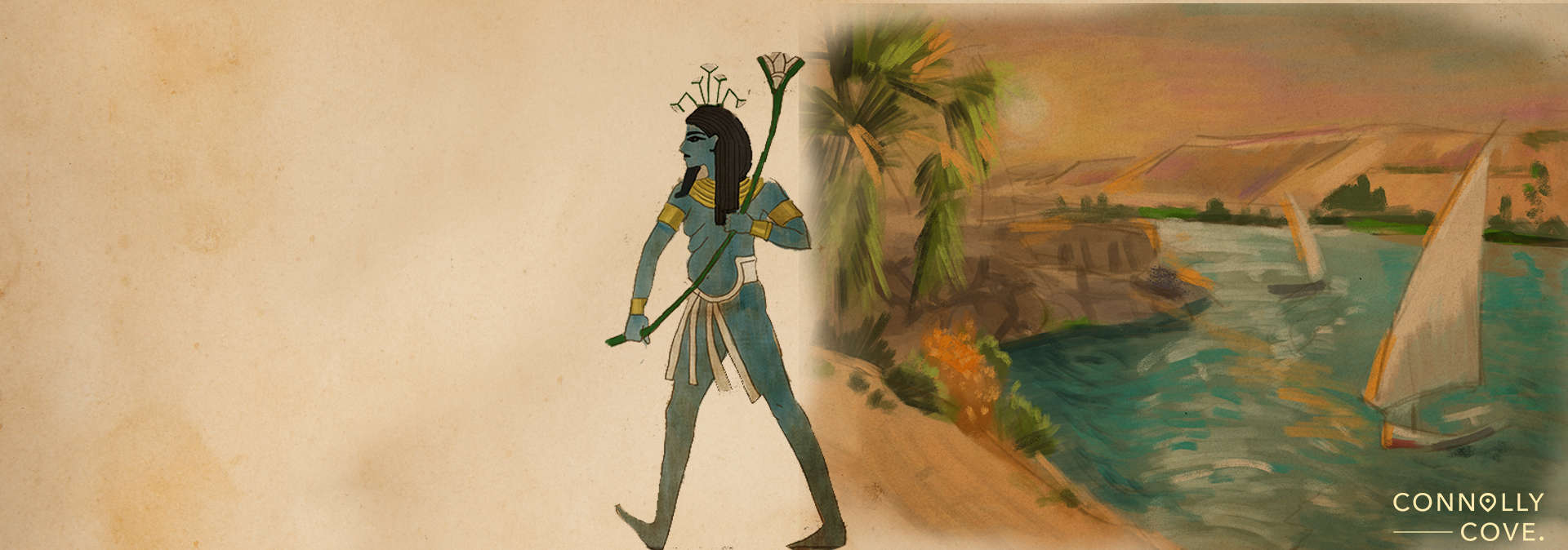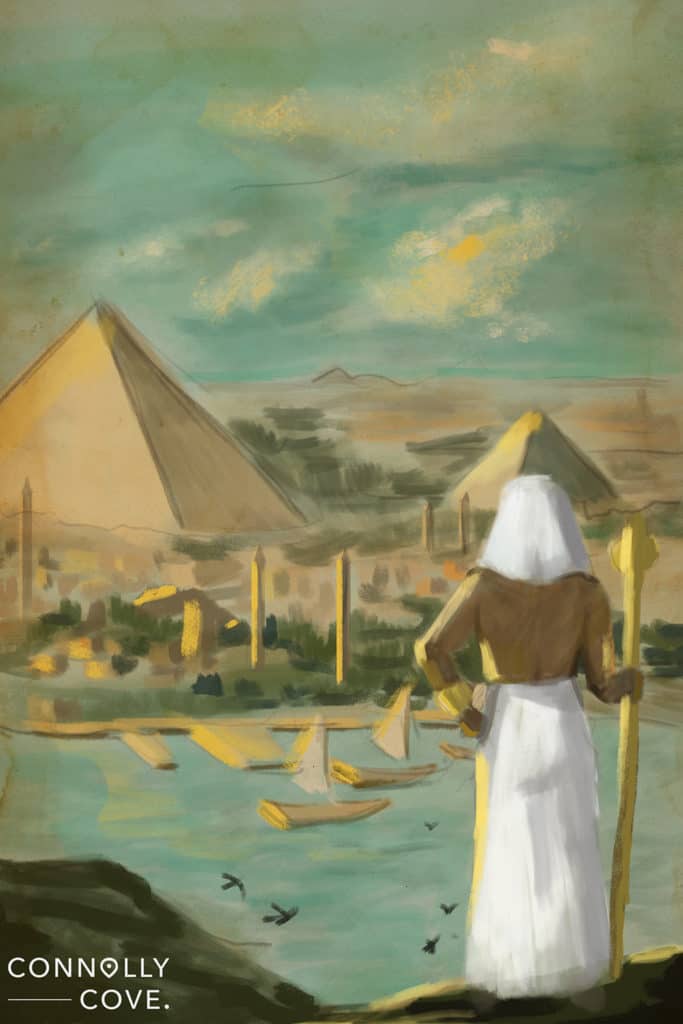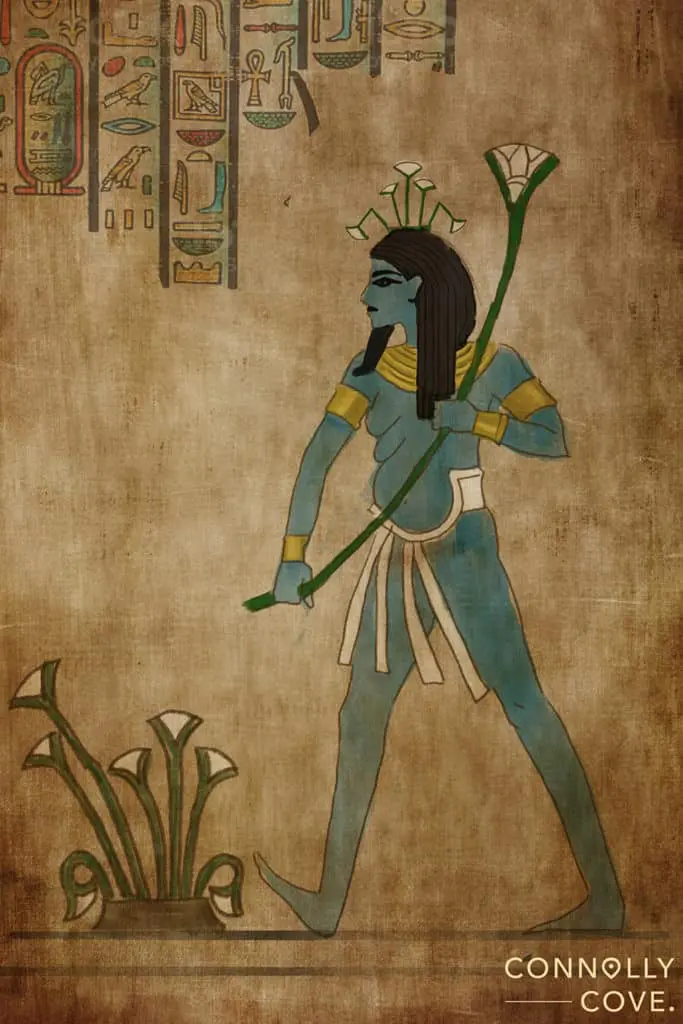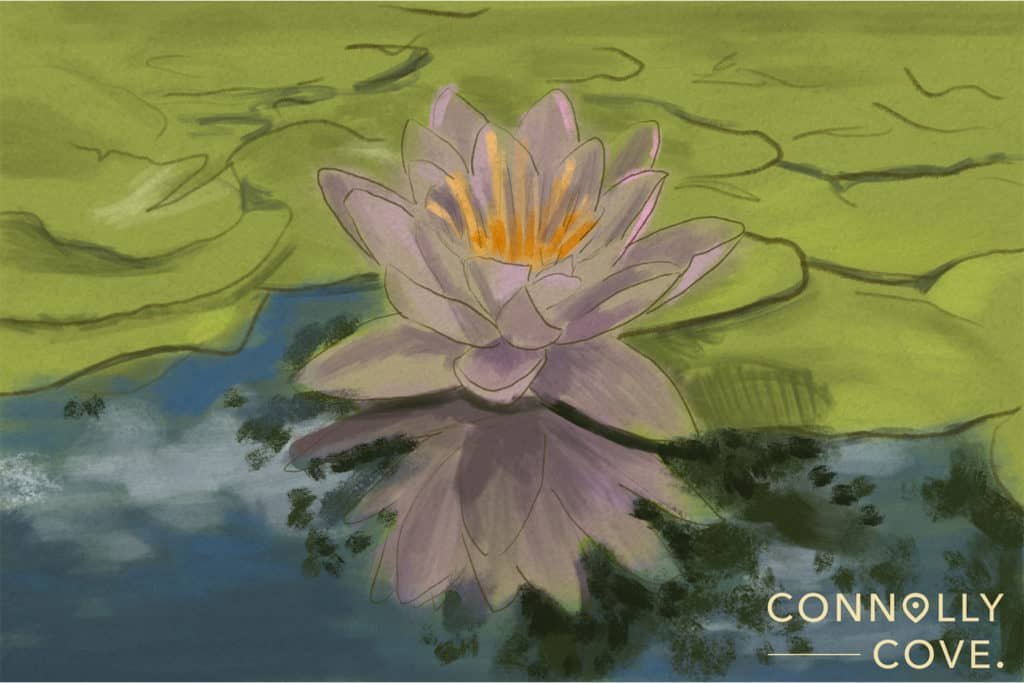Hapi, The 3 Great Egyptian Gods of the Nile

Updated On: February 01, 2024 by Ciaran Connolly
Understandably, the word “Egypt” is the first thing that comes to mind when many think of the name “Nile,” as the river has played an essential role in ancient and modern Egypt.
It is said that the gods bestowed the Nile upon humanity as a gift, and they controlled it. The season of the Nile’s flood begins with the sighting of the brightest star. When it overflows, it provides prosperity and fertility.
Ancient Egyptians believed that the river Nile was a present from the gods. They connected it with energy, placed their everyday lives around the rise and fall of its water level, linked it with vigour, and arranged their day-to-day lives around the rise and fall of its water level.

As a result, the Nile defined the Egyptian calendar with its three seasons: flood, agricultural, and harvest. When the Nile reached its maximum capacity, it bestowed wealth and fertility upon the land and those individuals who set their homes around the neighbouring areas. When the water level rose too high, the inhabitants of the muddy dwellings were forced to relocate, and famine ensued when it didn’t rise high enough.
Consequently, the gods’ power to exert their will over the river was of the utmost importance; Khnum and Hapi were the most important deities worshipped during this ceremony.
Table of Contents
Hapi
The god of the Nile was responsible for the flooding. The deity was typically depicted as a large man with breasts stuck out from his chest, which stood for fertility and abundance. In most depictions, there were several water plants surrounding him, and his body was occasionally painted blue and sometimes featured depictions of water lines.
The god Hapi was in charge of the flooding of the Nile. In appearance, he was androgynous, displaying masculine characteristics yet having a feminine upper body; this reflected the Nile’s biological parents’ personalities. As a direct consequence of these characteristics, it was believed that he was able to start a family.
Aswan & Sisila
located close to the first cataract, were the essential cult locations for Hapi. It has been demonstrated that Hapi only played a minor role in the religion, even though the Nile flood waters were critical to Egypt.
It is possible to understand why Osiris was revered as the monarch of the Nile under his status as a god, which was connected to the god’s resurrection. Flooding and an overall rise in sea level.
The Old Kingdom was the beginning of the Graeco-Roman era that they were entering. A procession of personified nome gods is depicted on the lower registers of the walls of many temples. Typically, they wear pants representing Upper Egypt and Lower Egypt on their heads.
They are carrying the beautiful presents that the entire nation has given.
As the god of flooding, the crocodile-like deity Sobek, whose domain consisted of the Nile’s waters, was also revered by the ancient Egyptians.
The Nile
The entire world. Africa is the home continent of both the Blue Nile and the White Nile rivers. The two rivers bring in the most excellent quantity of water combined. Over 6,700 kilometres are covered by the Nile, making it the longest river in the world.
The water provided by the river has always been essential, especially for a country as arid as Egypt. The recurrent flooding of the Nile, which washed rich muck across the banks of the river, made it possible for people to engage in agriculture. It is accurate to say Egypt is the gift of the Nile.
The ancient Egyptians thought that the waters that made up the Nile came from a place called Nun. The water was present at that location for a very long time until the Elephantine emerged on the scene. And whose exceptional protection for the Niel they were entrusted with.
Rainwater came from the Nile in the sky. One of the gods of Elephantine is known as Khnum, and his temple in Elephantine contains multiple Nilometers, one of which is linked to the sacred lake. This deity, who represented the god Hapi, was responsible for ensuring that the flood would occur.
Even though other countries might not have had access to the Nile, the Egyptians believed that the creator deity had provided for them by making the Nile. As far back as the New Kingdom, people have held this belief.
However, the existence of vegetation is in no way unrelated to that. It is possible that the goddess Nephthys offered him assistance or protection. The god had deep ties to the region to the north.
The god Hapi is typically depicted on the western side of the headend of the coffins from the Middle Kingdom. The fact that he is portrayed as a man or as a man with the head of a baboon most likely alludes to a tradition that dates back to the distant past.
Since the time of Seneferu, people have talked about a baboon named Hepi. The lid of the Canopic jar might also be designed to resemble the head of a baboon—a distinct deity whose name is articulated in a manner comparable to how we do it.
Hapi is the god of the Canopic jar associated with the flooding of the Nile. The name was given to the various containers, such as pots and boxes, that were used to hold the mummified internal organs.
The Container
Lids frequently take the form of Amset, Duamutef, Hepi, and Qebehsenuf, known as the Four Sons of Horus. One of these gods was responsible for protecting the intestines, liver, lungs, and stomach.
Isis, Neith, Nephthys, and Selkis, each associated with one of the four cardinal directions (South, east, north, and west, respectively), took turns to cover each of the sphinxes.
The mummification of Queen Hetepheres, who was also Seneferu’s wife and Khufu’s mother, is the first time internal organs were successfully preserved. The alabaster chest was discovered in her tomb, and it had been divided into four different sections.
The first three containers held the remnants of her organs preserved in natron, while the fourth container contained dried organic material. The word “canopic” derives from a Greek sailor named Canopus.
Who was venerated during the Greco-Roman era as a jar containing a human head and was rumoured to have been buried at Canopus (Abuqir) in the Delta? The “jar” in Canopus was shaped like the god Osiris and had nothing to do with organs,
Despite this, it quickly gained widespread adoption. In the religion of the ancient Egyptians, Hapi was personified as the flooding of the Nile River that occurred once every year.
Throughout Egyptian history, the personification of natural fertility known as Hapi was considered the most important and influential. In his honour, hymns were written, but there were no temples or other places of formal worship outside of the southern narrows of Jabal Al-Silsila.
Shrines were constructed, and annual sacrifices were thrown into the river’s rising waters to honour him. It was depicted that Hapi was a chubby man with swollen, pendulous breasts (a sign of prosperity) and a belt appropriate for a marsh dweller or servant.
This form, which was initially shared by a wide variety of personifications, became increasingly associated with Hapi. Ancient Egyptian mythology and history revolve around Hapi, the fertility god who personified the annual flooding of the Nile.
Hapi Was An Egyptian God
Discover the myths, legends, and religious beliefs connected to Hapi, the Egyptian deity of the Nile, who was credited with bringing silt to the banks of the river.
One of the titles bestowed upon him was “Lord of the River Bringing Vegetation.” He was frequently depicted as an androgynous god, meaning his appearance matched male and female characteristics. His name was Thoth.
He had a crown on his head, and his skin was blue. It was made of papyrus and lotus plants. On Elephantine Island, Hapi worshipped alongside the three other gods associated with the Nile: Khnum, State, and Anuket.

These deities are collectively referred to as the Elephantine Triad. On the island of Elephantine, which is found in the Nile River close to Aswan and borders the northern part of Nubia, worshippers would pay homage to the gods Khnum, State, and Anuket, who are collectively referred to as the Elephantine Triad.
At Elephantine, the god Hapi was honoured because it was believed that it was he who was responsible for depositing silt along the Nile’s banks. His cult’s headquarters were in Gebel el-Silsila, located approximately 65 kilometres north of Aswan.
Who Was Hapi?
Egyptians believed that Hapi, their fertility god, was the one who was responsible for bringing mud to the banks of the Nile.
Hapi was a deity with a human head frequently depicted as androgynous, meaning they appeared to be either male or female. He saw himself as having blue skin and a headdress composed of papyrus and lotus plants.
The androgynous representations of the god Hapi, his blue skin colour, his crown, and the “Divine Beard” were the symbols and attributes associated with the appearance of Hapi.
Also associated with Hapi was the “Divine Beard.” The colour blue, which is associated with Hapi, is a symbol of water, floods, and fertility. Blue skin is a manifestation of this. The colouration of Hapi’s skin, which was blue, served as a metaphor for the Nile River and all the crops and fertile land the river nourished.
Androgynous appearance: The god was portrayed as having a hybrid physique, appearing both male and female at different times and having a woman’s breasts. This was one of the characteristics of the god.
It was common practice to depict Hapi as donning the striped names headdress of a pharaoh along with a wreath of plants, similar to how Egyptian gods were depicted wearing their crowns. Hapi was depicted with a false beard with a curl pointed upwards.
This type of beard is also called an “osird” or “the divine beard,” It was worn by the Pharaohs who were still alive. They sported beards thinner toward the ends than the rest of the face. After he had passed away, the Pharaoh was the only person who could put it on.
The Lotus Plant The lotus also called the water lily, is a type of plant that prefers to grow in murky swamps where it can get plenty of water. It was thought to be an essential example of Upper Egyptian culture at the time as well as an important symbol of fertility and Hapi (south)
The Papyrus Reed Papyrus was a type of water reed that was once plentiful in Egypt. It was used to make writing tablets, rope, furniture, and boats, among other things. Additionally, it was put to use in a variety of other applications.
The lotus, intertwined with the long stems of papyrus reeds, stood for the unification of Upper and Lower Egypt. The papyrus represented lower Egypt, which was located in the north.
The History Of Hapi In Brief
The following information and description will give you a concise summary of Hapi. Hapi or Hep Both Hapy and Hapi refer to different Egyptian deities, but their names have become interchangeable and can be used interchangeably over time. To elaborate: Hapi was the deity of the Nile river.
A funerary deity depicted on a Canopic jar, Hepi was a son of the god Horus. The role of Hapi is described as that of a god of the Nile connected with silt, a rich black mud used for fertilisation. A potent symbol of fertility and Hapi, the water lily was historically connected with Upper Egyptian culture.
The lotus flower, another name for the water lily, is sometimes used interchangeably. It is most successful in muddy marshes (South).
The Elephantine Triad and Hapi’s Place in Their Sacred Mythology
The fables, myths, and legends that are the foundation of Egyptian culture Mythology feature Hapi, the Egyptian god of fertility and water. Hapi is also associated with the rich black mud that is called silt.
On the frontier between Egypt and Nubia, it was commonly believed that the Hapi lived in caves close to the whitewater rapids of the cataract on the Nile.
The Nile River For Ancient Egyptians:
- Ancient Egyptian society and economy depended heavily on the Nile River because of its vast agricultural resources.
- Every year, a torrent of water overflowed onto the banks of the River Nile, leaving behind thick, rich mud (also referred to as black silt) and alluvial soil, fertilising the land.
- It was believed that the god Hapi of the Nile was responsible for bringing the mud to the Nile’s banks, which made farming possible in what would have otherwise been a desert region.
- It was believed that the three gods that made up the Elephantine Triad were in charge of determining how much of Hapi’s silt would be carried downstream by the Nile during each year’s flood.
The Three Gods Of The Nile That Made Up The Elephantine Triad Were As Follows:
- Khnum, the protector of the Nile River
- Sat, the goddess of the periodic flooding;
- Anuket, the goddess of cataracts
Following in their footsteps is the “Arrival of Hapi.” The Nile River travels from South to North before emptying into the Mediterranean Sea at its delta.
The annual flooding of the Nile, known to the Ancient Egyptians as Hap, was of such significance to their way of life that they organised all of their activities and pursuits around it. Ancient Egypt’s economy and people’s well-being depended on the country’s abundant agricultural resources and the River Nile.
Every year, a torrent of water overflowed onto the banks of the River Nile, leaving behind a thick, rich mud that fertilised the land making; it was ideal for growing the crops that fed Egypt.
- The time of the Nile flood was referred to as Akhet, and this season was known as the Flooding Season (June – September)
- Planting Time: The planting season was referred to as “Peret” at the time (October – January)
- Shemu Was the Name of the Harvesting Season: Shemu was the name of the harvesting season (February – May)
The Nile’s recurrent flooding was a factor in contributing factor. Cause for celebration, large festivals were held for the occasion, and river processions were known as the “Arrival of Hapi.”
Egyptian farmers would travel to his shrines on Elephantine island, which is now located in Aswan but was once home to worshipping Khnum, and his temple, which can be found in the city of Esna, on an annual basis to pray for adequate flooding and an adequate supply of silt.
Both insufficient water and an abundance of flood water would be equally catastrophic because they would prevent planting new crops. This would lead to starvation.
As stated earlier, the god Osiris likely served as a river god during the pre-dynastic periods. Or a god of water, and with time, he evolved into being identified with Hap or Hapi, the god of the Nile.
Also included are Senmut, Sahel, Philae, and Elephantine islands. It appeared that the god of the Nile, Hepi, known as “the opening of the paths,” were related during the Vth Dynasty of Egypt.
Although Hapi is always depicted as a man, his breasts are those of a woman and are meant to represent the god’s ability to nurture and procreate.
Hapi Is Always Portrayed As Having A Male Form
In the same way that the Egyptians divided their nation into the South and the North, they also divided the Nile, which resulted in the creation of gods associated with the Nile in the South and the North.

The claim that the Nile of the South originated in the section of the river that flowed from Sudan to Philae is not valid because the Egyptians believed that the Nile began at the First Cataract.
The Egyptians believed that the Nile started at the First Cataract, also referred to as the Qerti or “Double Cavern.” they referred to the portion of the Nile that ran from Elephantine to a small point as the Nile of the South.
This section of the Nile ran from Elephantine to the end. This portion of the Nile began at Elephantine and continued to its terminus.
We mention that on the top of Hapi’s head is a collection of lotus plants as an offering to the god of the South Nile, and on the top is an offering to the god of the North Nile in the form of a collection of papyrus plants.
Hap-Reset is the name given to the former, while Hap-Mehta is the name given to the latter. When the two distinct incarnations of Hep or Hapi are combined into a single image, the deity is depicted holding papyrus and lotus plants as well as two vessels in his hands.
In addition, he is shown holding a ship. It was thought that he employed these to pour the waters of the Nile River. The Egyptians utilised the Nile God and the papyrus circular X, considered a symbol of unity, to symbolise the South and North are coming together.
It is possible to make out two gods of the Nile tying a knot in the stems of a lotus flower. The pattern carved onto the thrones of monarchs from early onward was altered slightly to demonstrate that the thrones of the South and North had been connected and that the seated sovereigns’ rule on such thrones had extended.
This was done to show that the thrones had been associated. This was done to illustrate the connection that existed between the thrones of the South and the North.
As soon as it was established that Hapi was one of the most important Egyptian deities, she was almost immediately connected with all the great, ancient deities that were initially accountable for the creation process.
Ultimately, it was decided that he was not only the creator of the universe but also the creator of everything that gave rise to the universe and everything contained within it.
This Is Hapi, The God Of The Nile
If you check the last details we provided, you will find that you have the necessary basic information about The God of the Nile. Keep on visiting Learning Mole to learn a lot more about everything out there.







Wonderful
Glad you enjoyed our blog on Hapi 🙂